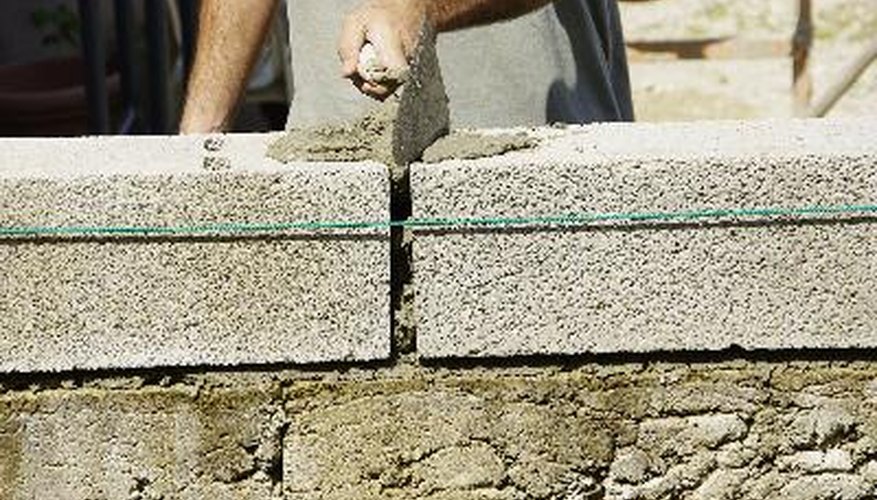A pig in a wall is a nightmare for a bricklayer. Either a miscalculation has resulted in the mismatching of the number of courses, or lines of bricks, along a wall, or one of two sides of a cavity wall has slipped during the installation of a damp proof course, rendering the damp proofing ineffective. In either case the work needed to correct it is likely to be extensive and costly.
Pig in damp course
The building firm Cavity Trays describes a "pig in a wall" as slippage between two skins of a damp proof course or DPC during a new build. Skins are two walls with the cavity for insulation between. The external wall is usually two or three bricks high for the installation of a DPC and the inner wall iis made from cheaper materials such as breeze blocks. Inner wall bricks should each be the same height as the top level of the two or three bricks used for the exterior wall.
- The building firm Cavity Trays describes a "pig in a wall" as slippage between two skins of a damp proof course or DPC during a new build.
- The external wall is usually two or three bricks high for the installation of a DPC and the inner wall iis made from cheaper materials such as breeze blocks.
Effects of slippage
Slippage occurs when one or other of the two skins sinks or otherwise settles, allowing damp to travel up the wall by hydrostatic pressure action, past the DPC barrier and rendering it ineffective. Unless you can fll the gap with mortar, or waterproof sealant added as an extra failsafe around the slippage, you are likely to need extensive building work to correct the brick levels and stabilise the wall foundations.
Pig in a wall
The dictionary published by the Clay Brick and Paver Institute (or CBPI) describes a pig in a wall as a building error in which the number of horizontal courses, or layers, of bricks along one end of a new wall does not match the number on the other end. When bricklayers build the wall from the outside in, the courses don't match up when they meet, even though the height from ground level may be the same. The error is caused by setting one side of bricks slightly lower than the other.
Regional variations
Bricklayers also call pigs "quelks" and "gorrets", regional variations in the United Kingdom that refer to the same building anomaly, although the etymology of the alternatives isn't clear and they may simply be dialect. Bricklayers might also refer to a course of bricks as being "a-grunt" or "a-pig" according to the "Dictionary of Slang and Unconventional English".
